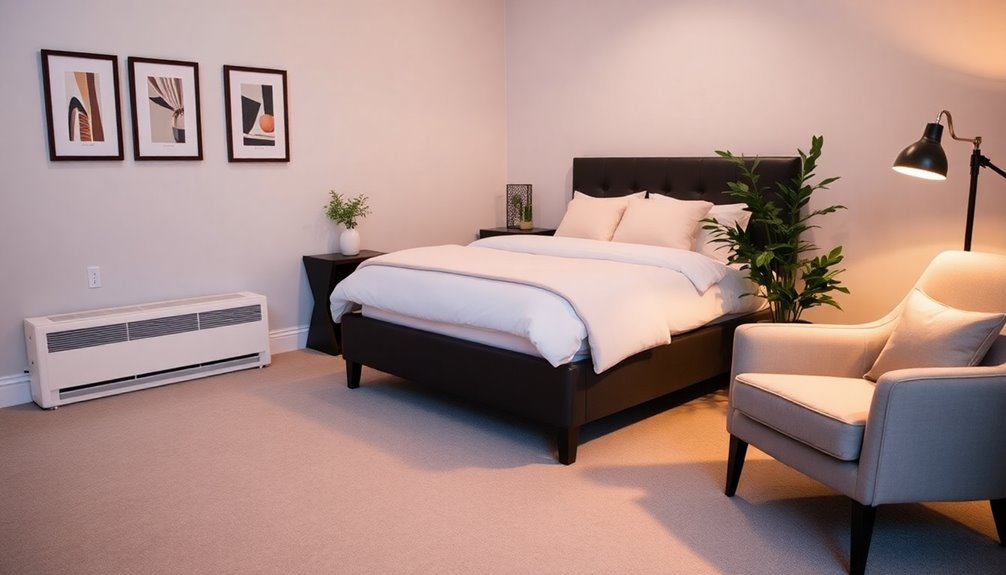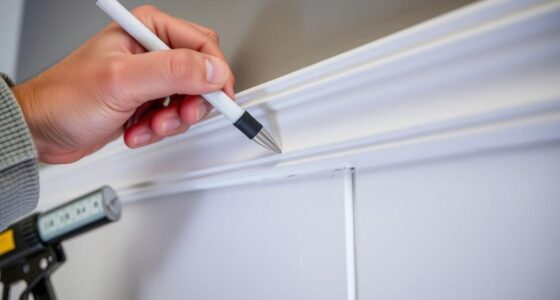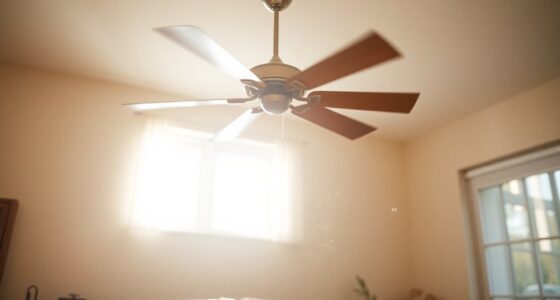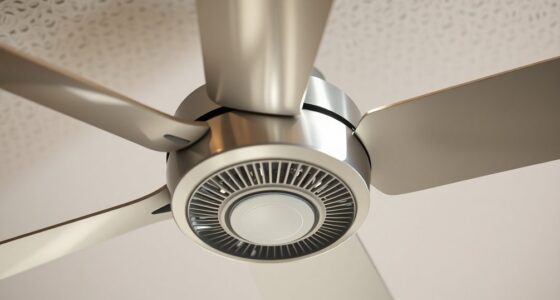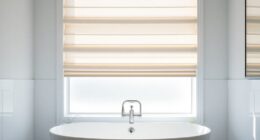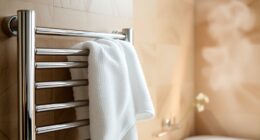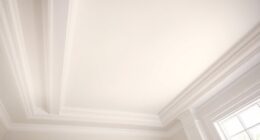To arrange bedroom furniture around baseboard heaters, begin by ensuring a minimum of 6 inches of clearance for airflow and safety. Choose furniture with legs or open designs to promote ventilation. Avoid blocking heater vents; consider using vent deflectors to guide heat circulation. Opt for compact furniture that fits without crowding the space. Regularly inspect your setup for flammable materials and keep curtains at least 8 inches above the heaters. This strategic arrangement not only prioritizes safety but also enhances heat efficiency and space. Keep going to discover more tips for optimizing your bedroom layout!
Key Takeaways
- Arrange furniture at least 6 inches away from baseboard heaters to ensure proper airflow and heat distribution.
- Select furniture with legs or open designs to enhance ventilation and avoid obstructing heat flow.
- Use vent deflectors if furniture is positioned close to heaters to direct warm air effectively throughout the room.
- Incorporate compact and multi-functional furniture to maximize space while keeping clearance around heaters safe and efficient.
- Maintain a 12-inch clearance in front of heaters to prevent fire hazards and enhance safety in your bedroom.
Maintain Clearance Around Heaters
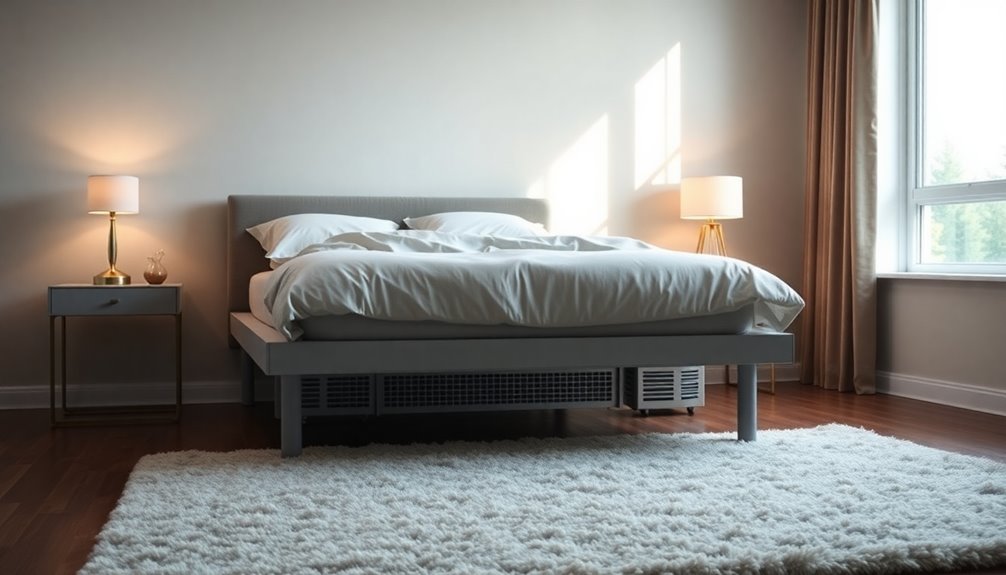
To guarantee safety and efficiency in your bedroom, it's crucial to maintain clearance around baseboard heaters. Keep at least 12 inches of space in front of the heater to prevent fire hazards and promote ideal heating performance. Additionally, ensure that the heater is connected to a dedicated circuit to prevent electrical overload, which can also enhance safety.
Avoid placing a couch or chair closer than a foot, as blocking airflow can diminish the heater's effectiveness. On the sides, maintain a clearance of at least 6 inches to allow proper heat distribution and reduce fire risks.
Verify no doors obstruct the heater when fully opened, and remember that fan heaters typically need 3 feet of clearance.
Regularly inspect the area for combustible materials or obstructions, and use vent deflectors if necessary to direct airflow effectively.
Choose the Right Furniture
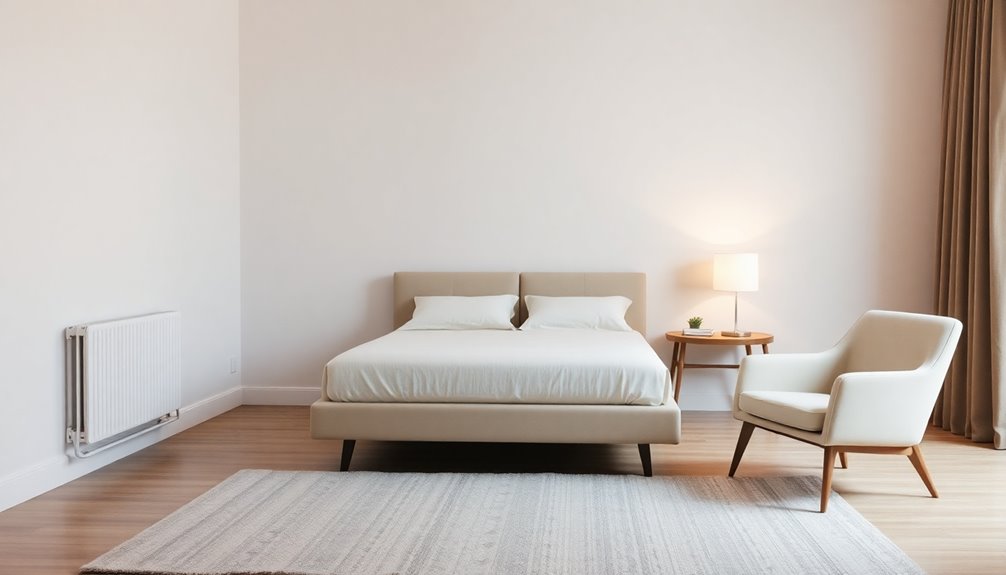
Selecting the right furniture is essential for creating a safe and comfortable bedroom around baseboard heaters. Choose pieces with legs or feet to enhance airflow, and avoid flammable materials.
Opt for compact furniture that won't obstruct heat flow, and consider adjustable options to easily rearrange as needed. Furniture with open spaces promotes ventilation, so look for shelves or drawers that allow air to circulate. Maintaining a few inches of space from baseboards is sufficient for safety and airflow.
Prioritize safety by selecting fire-resistant materials and those with tip-over protection. Confirm surfaces are cool to the touch and construction is stable.
Finally, think about alignment with heat flow and maintain a safe distance from heaters to prevent accidents and optimize warmth throughout your bedroom.
Strategic Furniture Arrangement
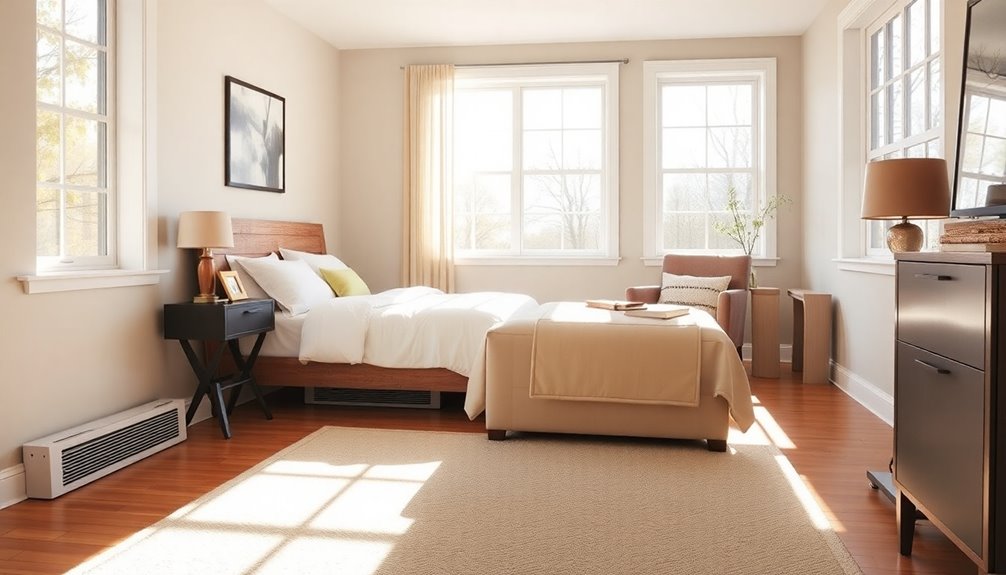
While arranging your bedroom furniture, it's important to take into account the placement around baseboard heaters for both safety and comfort.
Keep furniture at least 6 inches away from the heaters to facilitate proper air circulation and reduce fire risks. Avoid blocking vents, as this can lead to inefficient heating and higher energy costs. Maintaining clearance helps to ensure heating efficiency throughout the room. Additionally, consider that paint type can influence the overall comfort of a space by creating a warmer or cooler atmosphere.
If you must place furniture nearby, consider using vent deflectors to guide airflow into the room. Optimize your layout by positioning larger pieces as focal points, drawing attention away from the heaters.
Utilize vertical space with shelves and choose multi-functional furniture to keep the area tidy. Incorporate mirrors and decorative elements to enhance visual appeal while minimizing the focus on baseboard heaters.
Prioritize Safety Measures
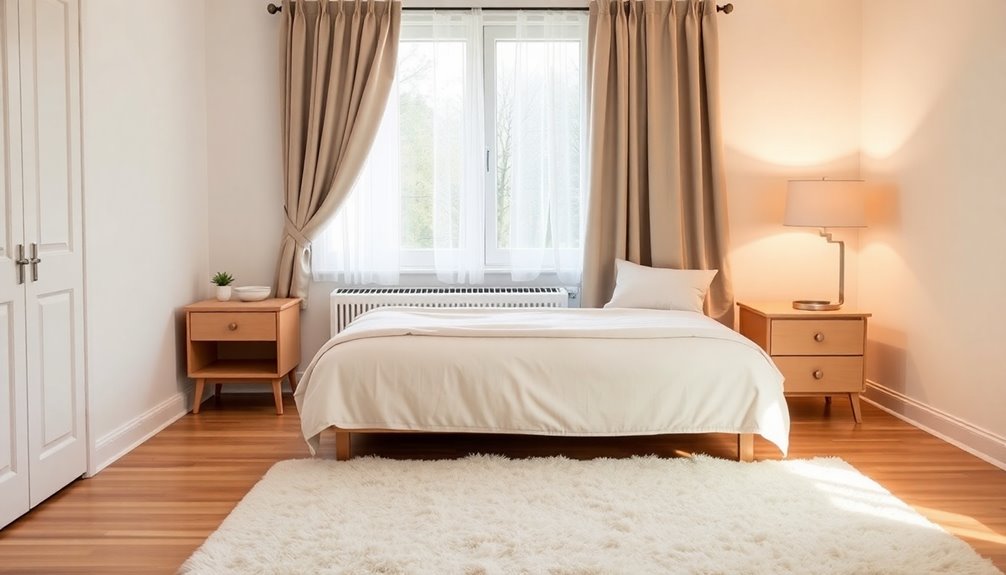
When arranging your bedroom, prioritizing safety measures around baseboard heaters is essential for preventing accidents and guaranteeing efficient heating.
Keep furniture at least 6 inches away from heaters to avoid blocking heat and reducing fire risks. Avoid placing flammable materials, like fabric-covered items, too close to the heaters. Regularly maintaining this minimum clearance helps lower fire hazards and potential damage.
Ascertain curtains have an 8-inch clearance from the top and a 1-inch gap from the floor for proper air circulation. Regularly check and clean vents to maintain airflow and prevent dust buildup.
Educate children about the dangers of baseboard heaters, supervising them to guarantee they stay safe.
Optimize Heat Efficiency

Maximizing heat efficiency in your bedroom can greatly enhance your comfort and reduce energy costs.
Start by minimizing window drafts; use thermal curtains and seal any gaps to prevent cold air intrusion. Confirm your windows are well-insulated and regularly checked for wear.
Maintain at least 6 inches of clearance around baseboard heaters to allow for proper air circulation. Avoid placing flammable materials nearby and keep vents clear. Additionally, keeping heaters clean by removing dust and debris will help improve their heating efficiency.
Consider using vent deflectors if furniture is close to vents. Adjust your thermostat settings based on your activity level, and invest in a programmable thermostat for convenience.
Regularly inspect and clean vents, heaters, and insulation to guarantee peak performance, enhancing both comfort and efficiency in your space. Additionally, consider scheduling professional maintenance checks at least once a year to identify any potential issues before they escalate. This proactive approach not only prolongs the lifespan of your systems but also ensures optimal operation. By keeping track of carrier performance and comfort comparison, you can make informed decisions about upgrades or replacements that will further improve your home’s energy efficiency.
Assess Room Layout
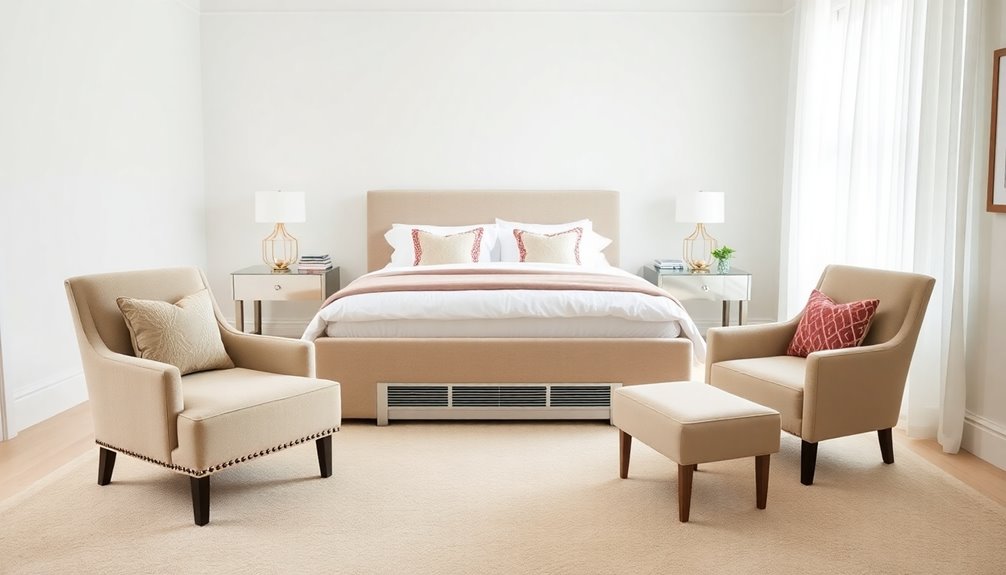
Evaluating your room layout is essential for creating a comfortable and functional bedroom. Start by measuring the room's length and width, and identify the longest wall to place your bed against. This maximizes floor space and maintains balance.
Be mindful of door and closet placements; avoid positioning the bed directly on the same wall to guarantee smooth flow. Take note of window locations to utilize natural light effectively. Additionally, consider the impact of budgeting for furniture to ensure you make wise spending choices.
When planning furniture placement, position the dresser opposite the bed for visual harmony. Use minimalistic furniture to prevent overcrowding, and confirm nightstands fit comfortably beside the bed. Additionally, mixing large and small furniture can help create a more dynamic layout while maintaining a practical use of space.
Finally, always maintain a safety clearance of at least six inches between furniture and heaters for ideal heating and fire safety.
Creative Space-Saving Solutions
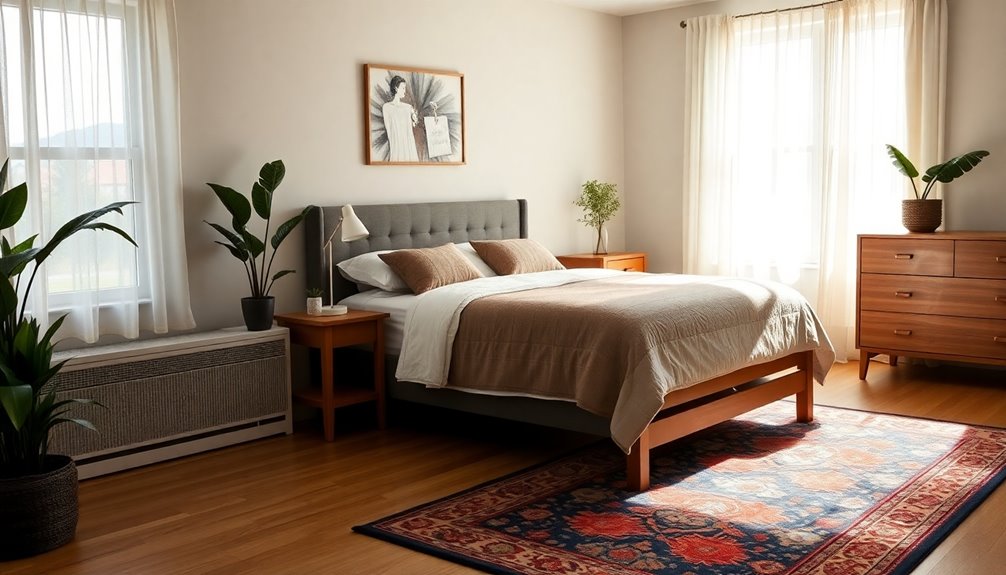
After evaluating your room layout, it's time to explore creative space-saving solutions that can enhance both functionality and comfort in your bedroom.
Consider investing in loft beds with desks or built-in storage to free up floor space. Beds with built-in drawers eliminate the need for extra furniture, while wall-mounted tables can be folded away when not in use. Additionally, choosing water-efficient toilets can inspire environmentally conscious design choices throughout your home.
Incorporate multi-functional pieces like daybeds or storage benches for seating and storage. Utilize vertical space with wall shelves and tall, slim dressers to maximize storage without crowding the floor. Additionally, choosing multifunctional furniture can significantly improve the usability of your small bedroom.
Finally, don't overlook under-bed storage options, such as bins or drawers, to keep seasonal items neatly tucked away and maintain an organized space.
Frequently Asked Questions
What Types of Materials Are Best for Furniture Near Heaters?
When placing furniture near heaters, you'll want to focus on materials that resist heat and won't catch fire easily.
Metal and hard plastic are great choices because they're heat-resistant. Opt for upholstery with non-combustible fabrics to reduce fire risk.
Regularly check your furniture for signs of heat damage.
How Can I Assess Airflow Efficiency in My Bedroom?
Imagine you're in a bedroom that feels stuffy and warm.
To assess airflow efficiency, start by measuring the room's airflow with an air balance hood. This'll help you compare it to the required airflow for comfort.
You can also analyze contaminant distribution to see how well air circulates.
By rearranging furniture and ensuring vents are clear, you'll improve airflow, making your space feel fresh and comfortable again.
Regular maintenance keeps it efficient!
Are There Specific Heater Brands That Are More Efficient?
Yes, there are specific heater brands that are more efficient.
For instance, Cadet's electric baseboard heaters offer a maximum output of 1000 watts and feature high-temperature safety shutoff.
If you prefer hydronic options, they distribute heat more evenly but take longer to warm up.
Space heaters like Dreo Solaris provide quick heat with 1500 watts and multiple settings.
Evaluating your needs can help you choose the most efficient option for your space.
Can I Use Air Purifiers Near Baseboard Heaters?
You can use air purifiers near baseboard heaters, but you need to be cautious.
Keep them at least 6 inches away to guarantee proper airflow and prevent overheating. Make certain the purifiers don't block vents or intakes.
Regularly clean both devices to avoid dust buildup, which can affect efficiency.
Always check for any signs of overheating or malfunction, and follow the manufacturer's guidelines for safe operation.
Safety first!
What Are Some Common Signs of Heat Damage to Furniture?
You might notice several signs of heat damage to your furniture.
Warped or dried-out wood can lead to weak joints and cracks.
Paint may bubble, peel, or change color, making surfaces look rough.
Doors and drawers might stick, misalign, or become difficult to open.
Structural integrity issues, like wobbly legs and dried-out glue, can compromise stability, increasing the risk of collapse.
Keep an eye out for these signs to protect your furniture.
Conclusion
By keeping these tips in mind, you can create a functional and cozy bedroom while accommodating baseboard heaters. Did you know that improper placement of furniture can reduce heating efficiency by up to 30%? So, make sure to leave enough clearance around your heaters and choose furniture wisely. With a little creativity and planning, you can maximize space, maintain safety, and enjoy a warm, inviting room all winter long. Happy decorating!
